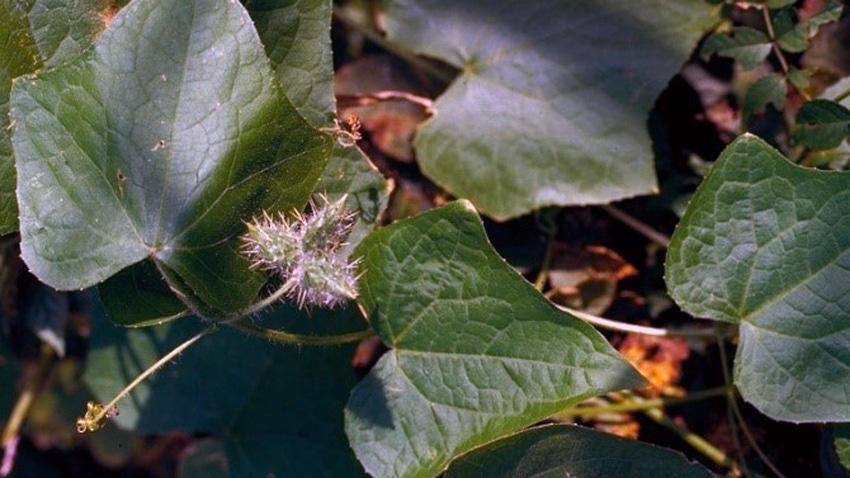October 11, 2021

A few weeks ago, I received some pictures of field corn in North Georgia that was infested with a vine-like weed known as burcucumber. At first glance, the untrained, or in my case foggy eye, might easily mistake this weed for another type of morning glory, but it is in an entirely different plant family.
Burcucumber is a member of the Cucurbitaceae plant family, while morningglories are members of the Convolvulaceae family. It’s not the first time that I have been asked about this particular weed since I have been in Georgia for 22 years, so I thought it might be a good idea to get in on everyone’s radar, just in case.
Burcucumber is an aggressive summer annual vine that is native to the northeastern states. Unfortunately, it has also been identified in every southeastern state. It has been reported burcucumber vines can grow 12 inches in a single day and reach total lengths of 7 feet to 23 feet, which makes it another potential “combine clogger!" A single burcucumber plant has the potential to produce as many as 78,000 seeds. These seeds can emerge from soil depths ranging from zero inches to six inches.
Since burcucumber has been isolated to a few areas in northern Georgia, I have not been able to conduct any of my own research on its control. However, several of my colleagues around the country have been dealing with this problem for a long time and have plenty of good data. According to an old friend and colleague from Penn State University, field corn and soybean growers must consider using an IPM approach that includes preventing the spread of seed on tillage/harvesting equipment, modifying tillage practices when practical, and using a two-pass system of herbicide applications (PRE + POST).
The effects of tillage on burcucumber control have been very interesting. Plants from burcucumber seed buried deeper than 8 inches have a difficult time emerging, but plants developing from seeds left near the surface (i.e. no-till) are potentially more susceptible to PRE herbicides. So, troublesome fields with a long history of no-till might benefit from a deep plowing while fields with a long history of conventional tillage might benefit from no-till practices.
In field corn, Acuron or atrazine have provided the best residual control of burcucumber. Timely POST applications of Roundup + Atrazine, Liberty + Atrazine, Halex GT + Atrazine, or Laudis + Atrazine have also done fairly well.
In soybeans, PRE applications of products that include Classic (chlorimuron) such as Canopy, Envive, Fierce XLT, Valor XLT, and Trivence followed by timely POST applications of either Liberty, Roundup + Classic, Roundup + dicamba, or Enlist Duo (glyphosate + 2,4-D choline) should be effective.
Might not be a bad idea to make sure you procure a soybean variety that also has the STS trait if you plan on using a bunch of chlorimuron for the management of burcucumber.
Although very troublesome to those who have it in their fields, I do not think that the sky is falling yet with this weed around most of Georgia. Just wanted to let north Georgia growers that I hear and care about their problems, as well as letting south Georgia growers know what was going on in other parts of the state. Hopefully, farmers who are currently dealing with burcucumber can implement the recommended control practices to help minimize its spread to other areas.
As always, good weed hunting!
About the Author(s)
You May Also Like






